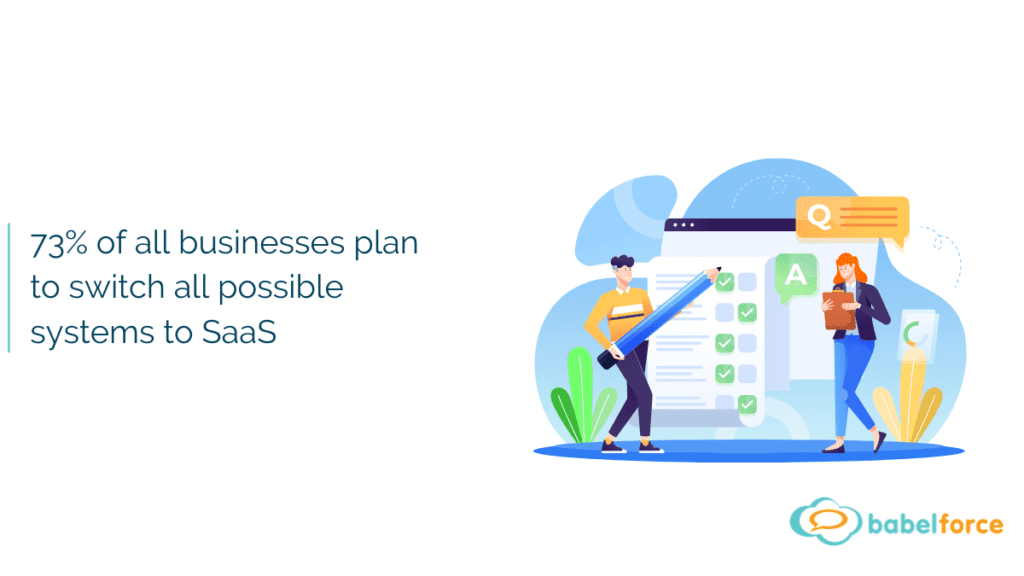Nothing kills call center efficiency more than when calls get sent to the wrong place.
When this happens, your business (and customers) waste a ton of time explaining problems and transferring calls. This is terrible for both CX and your call center’s bottom line.
But there is an easy way to avoid this issue: you just need a properly set-up automatic call distributor (ACD).
(Want more articles like this in your inbox? Click here to get our fortnightly CX newsletter.)
In this post:
What is call center ACD?
ACD is a type of call center technology that handles incoming calls and distributes them to agents or other services without human input.
This is extremely useful because it helps call centers handle a large volume of calls. And it also increases the chances of each call going to the agent best placed to solve the problem.
This helps both your business and the customer:
- The customer gets a better experience with less waiting
- You can answer more calls with the same resources
It’s a true win-win situation!
You just need to set your ACD up effectively
For an ACD to work effectively, you need to feed it data and create rules so it knows where to send each call.
Because of this, most ACDs are connected to an IVR. The ACD uses the information collected in the IVR to understand the caller’s intent and send them to the correct place.
ACD can collect intent in other ways too. Factors like the caller’s location or language are useful data points an ACD can use to send people to the correct place.
You can also use multiple data points.
For example, if the call center is experiencing a high volume of calls, the ACD can also consider factors like the estimated waiting time and call priority.

ACD goes beyond agents
ACDs don’t only route calls to agents. They can also route calls to other call center tools or systems.
For example, if your call center is closed, it will route calls to your voicemail or your self-service help system.
This ensures customers can access the help they need even when you are unavailable.
The advantages of a call center ACD
The benefits of using an ACD come down to more efficient routing.
Here are some of the main plus points.

Faster call handling
ACDs can route calls to agents in a way that minimizes call wait time.
For example, a linear call distribution system will send the call to an agent as soon as they become available. And because this happens automatically, manual processes don’t hold the system back.
Handle more calls
Faster call handling means your business can handle more calls with the same resources.
You can also integrate tools like self-service help systems to handle basic queries without needing the caller to speak to an agent. This further increases the number of calls you can handle.
Improved CX
The customer experience improves significantly when you use an ACD.
Skills-based routing systems mean the caller will speak to an agent who is best placed to help with their problem. This can speed up the call and reduce the need for CX-killing call transfers.

Use a single business number
When you use an ACD, you don’t need multiple numbers for each department. Instead, the customer calls your main business number and is routed to relevant help.
This keeps things simple for the customers, who no longer have to waste time finding the right number. It also means they can’t call the wrong number and clog up the wrong department’s phone lines.
4 main types of ACD to choose from
Here are four of the most common ways that you can route calls with an ACD. Choose the one that best suits your needs.
Skills-based routing
In skills-based call distribution, each agent is given a score based on their skill in a particular area.
The ACD then sends calls to agents based on their ability to handle a particular query.
For example, if the ACD knows the call is coming from a Spanish speaker, it can route the call to an agent with Spanish-language skills.
Or if the call is related to sales, it will be sent to a sales rep.
Conditional routing
Conditional routing subjects each call to a series of if/when scenarios and then routes the call based on the answer. It’s similar to skills-based routing but much broader in scope.
Some examples of conditions you can use in call routing include:
- If the caller is from a VIP account, route them to the next available agent
- If the call is made after 6 p.m., route it to the self-service help tool
- If the call is coming from a particular area, route it to a local agent
Conditional call routing is effective because you can choose rules that work for your business. It’s just a case of identifying relevant conditions and then creating rules around them.
Fixed order (linear) call distribution
This is a simple form of call distribution where agents are arranged in a list, and the ACD sends each call to the next agent in line.
If the next person on the list is already handling a call, the ACD will skip them and move on to the next free agent.

Circular call distribution
This is when calls are distributed to agents in a particular order.
This type of distribution ensures each agent handles an even number of calls, which is useful if you want to ensure that everyone gets the same workload.
The issue is that some callers may wait for a long time if one agent takes a long time on a particular call.
Flexibility is the key to effective ACD
What makes ACD truly powerful is that you can set yours up to work in a way that meets your business’s specific needs.
The best ACD connects with the other tools your business uses and allows you to set up routing conditions that benefit your company.
Once this system is in place, you’ll have a set-up that significantly improves your call center’s efficiency.





